How people live at the bottom of the ocean
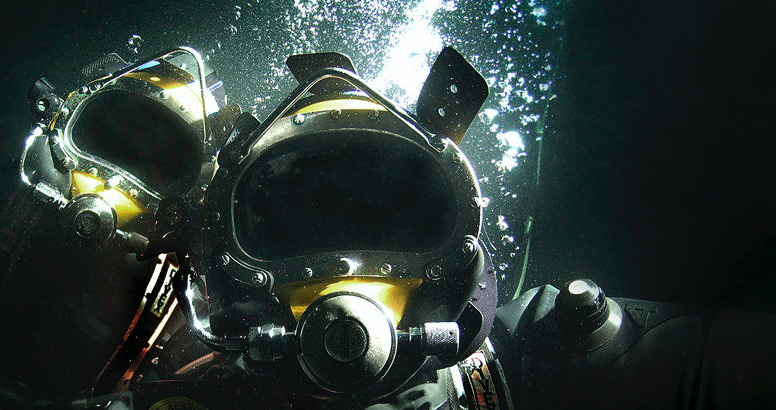
It is generally accepted that the profession of an astronaut is special. Big risks, alien habitat, confined space, no change of day and night, isolation and the inability to quickly return to familiar conditions. However, few people know that in similar conditions people work on the ground, or rather under water.
Diving with extreme saturation (diving) - perhaps the most "extreme" type of underwater activity (after Russian experiments in the field of liquid breathing).
To understand what he is, you need, as Ivan Vasilyevich said,
Historical background
As the technological level of mankind developed, the number of engineering and installation tasks increased, including under water. The level of development of robotics at that time made human labor at depth uncontested. And even today, not everything can be done with the help of robots. And human hands are often more efficient than the most technologically advanced manipulators.
However, working under water meant physical activity and high fatigue, which made long shifts impossible. At the same time, the complexity of operations and the scale increased, which naturally affected the time required to complete typical volumes of work under water.
The first problem faced by the commercial diving enthusiasts of those years was that after long periods of work, an equally long decompression was required, during which the diver would have to be in the water with all the attendant risks.
Therefore, in 1933, Max Zero was taken to solve this problem (in those years he was still a student at the Massachusetts Institute of Technology).
He builds a diving bell, which he gives a telling name "hell bellow»- it is difficult to grasp the context, but literally translates as
At the same time, the device was not the first of its kind - long before that, back in 1892, a spherical underwater vehicle was lowered to a depth of 165 meters by an Italian Balsamello (Felice balsamello and his bathysphere "Palla nautica").
And by 1934, the apparatus of another American designer William Beebe (William beebe) plunged to 932 meters, unthinkable at that time (this record lasted for 15 years).
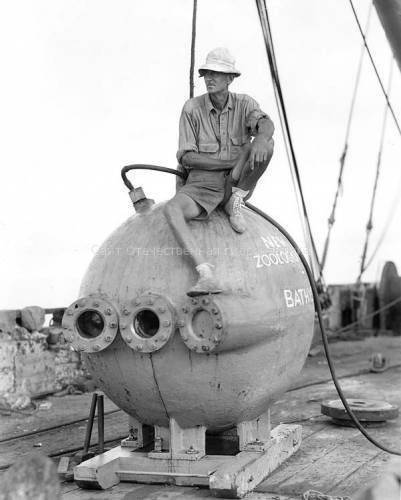
Zero's apparatus did not allow setting records, however, it made it possible for the diver to undergo decompression in relatively comfortable conditions (more comfortable than in the water). In addition, Zero was actively involved in experiments with gas mixtures and a diving suit, which ultimately allowed him to set another record - to dive in a suit to a record 420 feet (128 meters) for that time.

The next step was to conduct a series of experiments, the purpose of which was to determine whether the human body is, in principle, capable of enduring long dives.
And already on December 22, 1938 Max Zero и Edgar End performed the first deliberate saturation immersion simulation in the pressure chamber. The total time during which they breathed air at a pressure of 4 atm. (equivalent to a depth of 30 meters), was 27 hours. And, despite the fact that the subsequent 5-hour decompression was not entirely harmless, nevertheless, it was found that a person can stay at a depth for a long time.
Experimenting further, the researchers realized that humans have a so-called saturation limit, upon reaching which further depths do not increase decompression time. The maximum decompression time is 1 week. It doesn't matter whether a person has spent 10 hours at a depth, a day or a month - it will take one week to return to normal atmospheric pressure conditions.
From then on, the era of commercial diving with the ultimate saturation level began.
Above, I already gave a link to my previous article about underwater activities. And it presented part of the decompression profile diagram for a saturated dive:
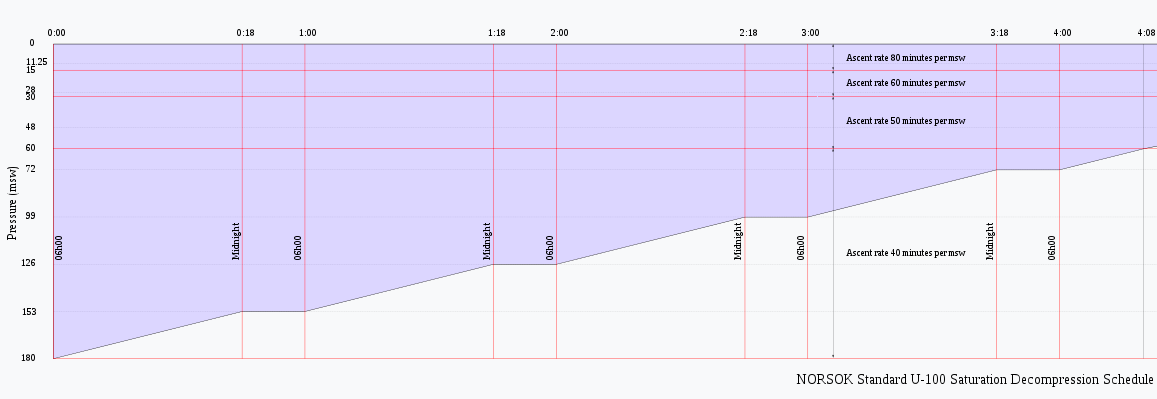
"Space stations" on board the ship
The essence of the method is quite simple.
A kind of space station, consisting of compartments, is being built on board the support vessel. There are several accommodation units in which divers live.
The divers enter the station, where they are slowly "squeezed" to the "depth" at which they have to work. When their work shift comes, they enter the bell through the airlock, close the hatch. And they are lowered to a predetermined depth, where they work. Later, everything is repeated in the opposite direction. In any case, it is better to see once than hear 100 times.
When diving, it is classic that there are three people in the shift - two divers work, the third helps them dress, monitors the functioning of the bell systems and, in case of an emergency, can go down under the water himself to provide assistance.
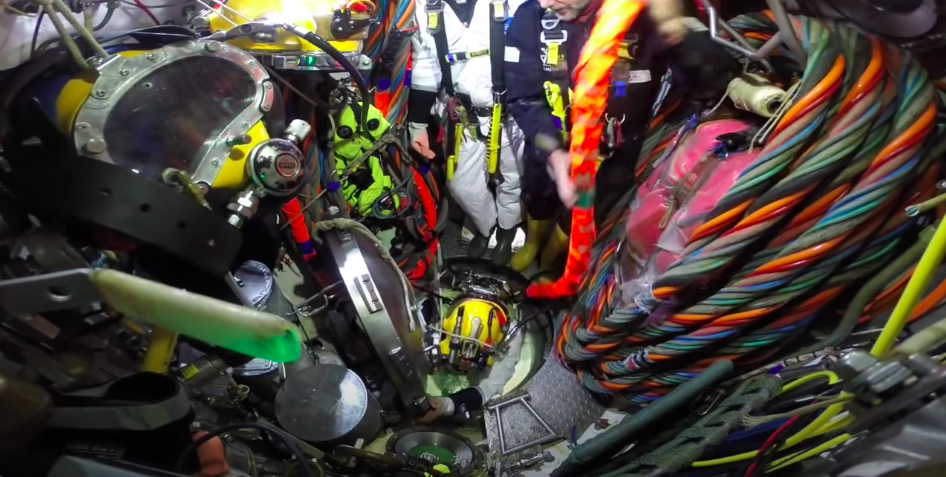
It is not difficult to assess the attendant risks of such work - despite the fact that there are people physically around the station on the ship, the divers inside are isolated from the outside world. If something happens, the person cannot be pulled out earlier than after 7 days.
Despite the fact that there are usually specialists with a medical education in the shifts, the amount of assistance that a diver can count on is limited to primitive manipulations - first aid for cuts, bruises, fractures, relief of acute conditions.
In addition to being placed on board such a station, a diving support vessel should have volumetric systems for storing gas (helium), as well as equipment for preparing gas mixtures. All key elements must be duplicated.
Since divers breathe gas under pressure 24/7, its consumption on a recreational scale cannot be described as anything other than "monstrous." Therefore, for storage of gas on board, huge sections are assembled from high-pressure cylinders.
The gas used is heliox, a mixture of helium and oxygen. Perhaps this is the most expensive solution available, but also the safest. In recreational (or technical) diving, such a mixture is also available for use. However, it was not widely adopted due to the price.
It should be noted that the helium used in the mixture is not technical, but "medical". It differs from the one used to inflate balloons in parks in the degree of purification, which naturally affects the price.
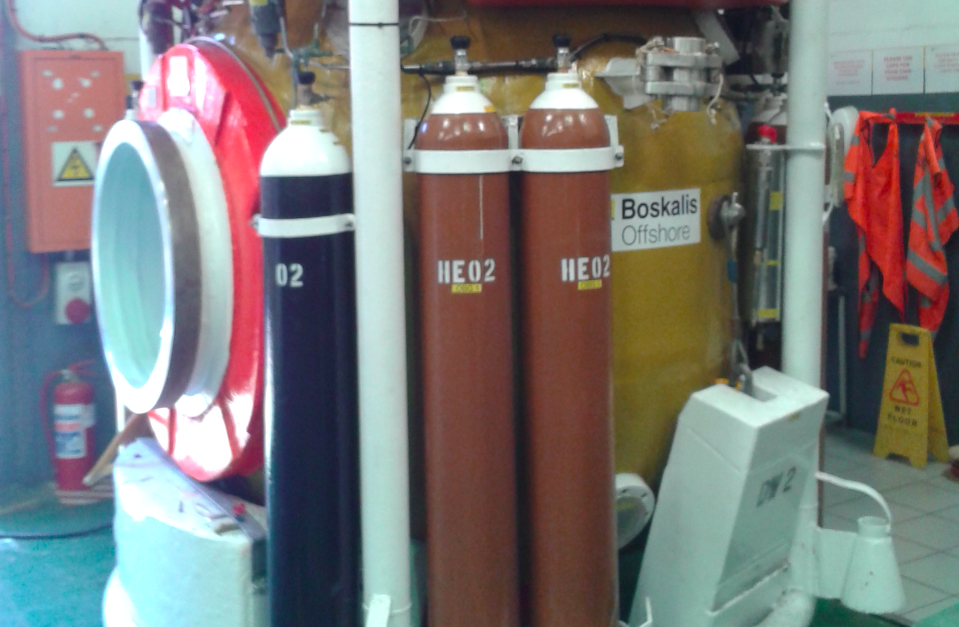
Due to the high cost of gas, divers also use closed breathing apparatus - when exhaling, the gas does not leave the circuit, as is the case with conventional scuba diving, but remains inside the system and is then reused (after "processing").
Low temperature problem
The temperature at depth is much lower than in the upper layers of the water. This means that divers will have to spend up to 6 hours in water, the temperature of which barely reaches + 5 ° C.
To solve this problem, they also borrowed "space" technologies (although who borrowed the concept from whom is still a question). We are talking about a suit of water heat exchange - along the “umbilical cord” from the bell (in addition to gas and electricity), warm water is continuously supplied, which warms the diver.
Training
Traditionally, the leaders in the field of deep sea diving are American and Norwegian schools. Russia lags far behind in this regard, both technically and conceptually. Although recently, there have been some positive trends aimed at reducing this lag. In essence, these "tendencies" boil down to the development of what has long been used on a massive scale in the West.
Among the requirements for candidates for training are excellent health, education not lower than secondary. And there are some specific tests for "aquaticity" - swimming on holding the breath, holding the breath in static, etc.
Among the operations taught in the basic courses are welding / cutting of metal, assembly of structures on bolted joints.
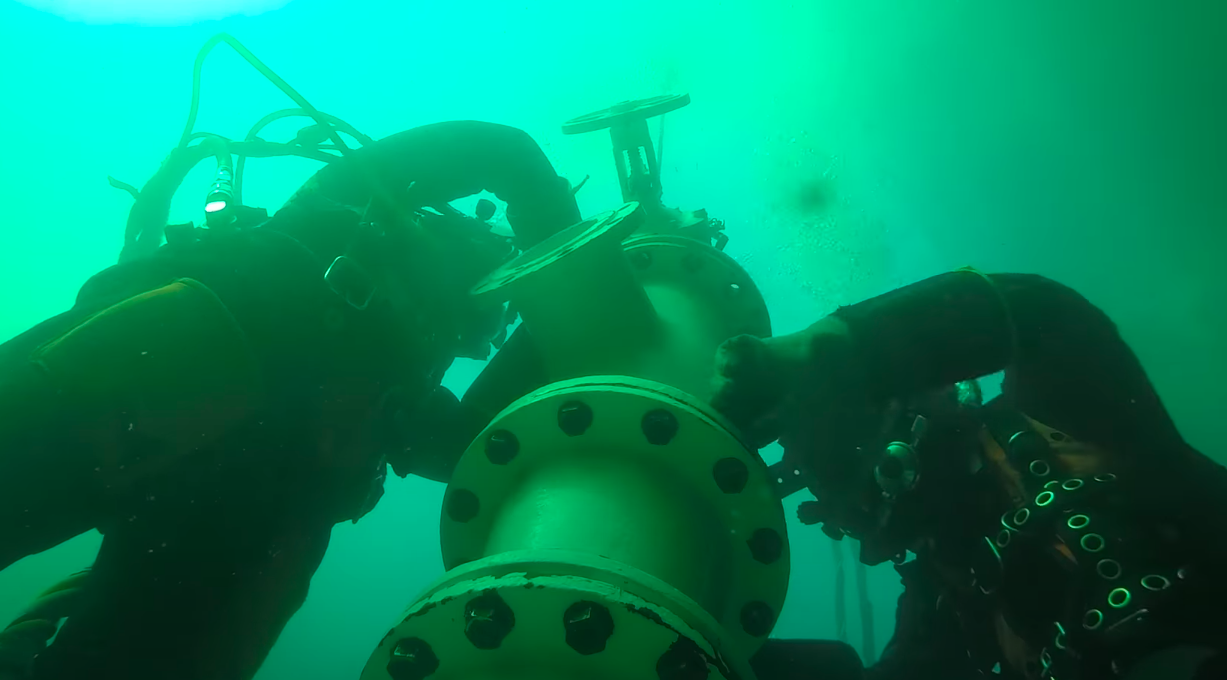
Practicing the skills of working with tools most of the time is spent at shallow depths. Or in special pools, where all the divers' actions can be controlled through the glass.
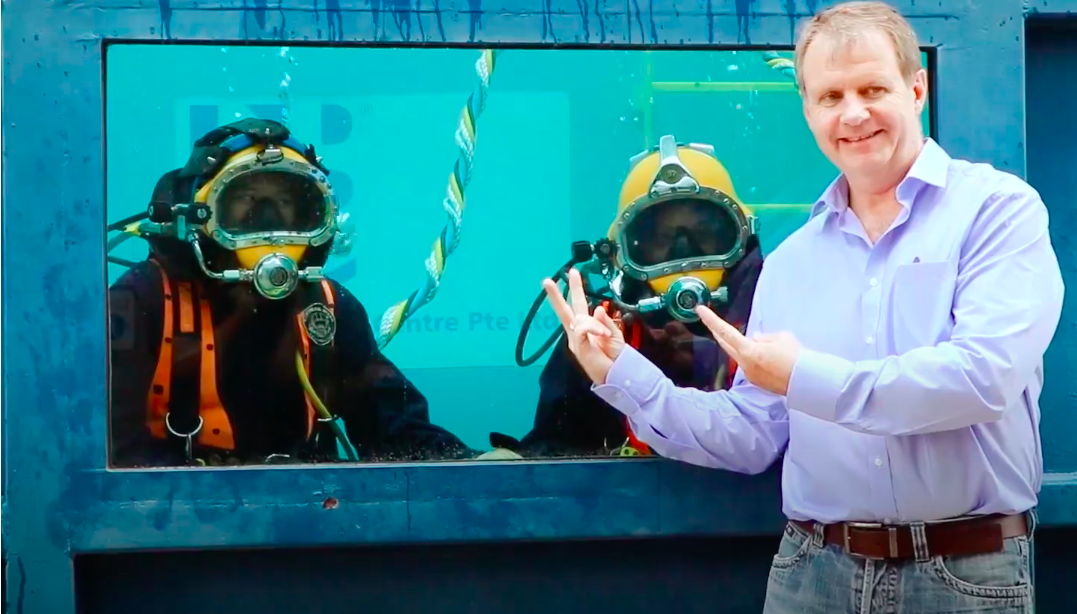
A special place in the preparation is occupied by the study of emergency situations - the separation of the bell or the umbilical cord.
If the entire bell is torn off, the divers remain at the bottom until help arrives. At the same time, their situation is somewhat better than that of submariners on an emergency submarine - the bell can be easily attached to the cable and pulled out.
Since the power supply is cut off, the bell gets very cold very quickly. Therefore, first of all, the whole shift changes into special suits that resemble sleeping bags in the shape of the body. Take an emergency supply of water and food with them inside the bag. They are included in breathing apparatus with replaceable cassettes (allow gas regeneration). And in such a "pupated" state they are waiting for help.
It looks something like this.
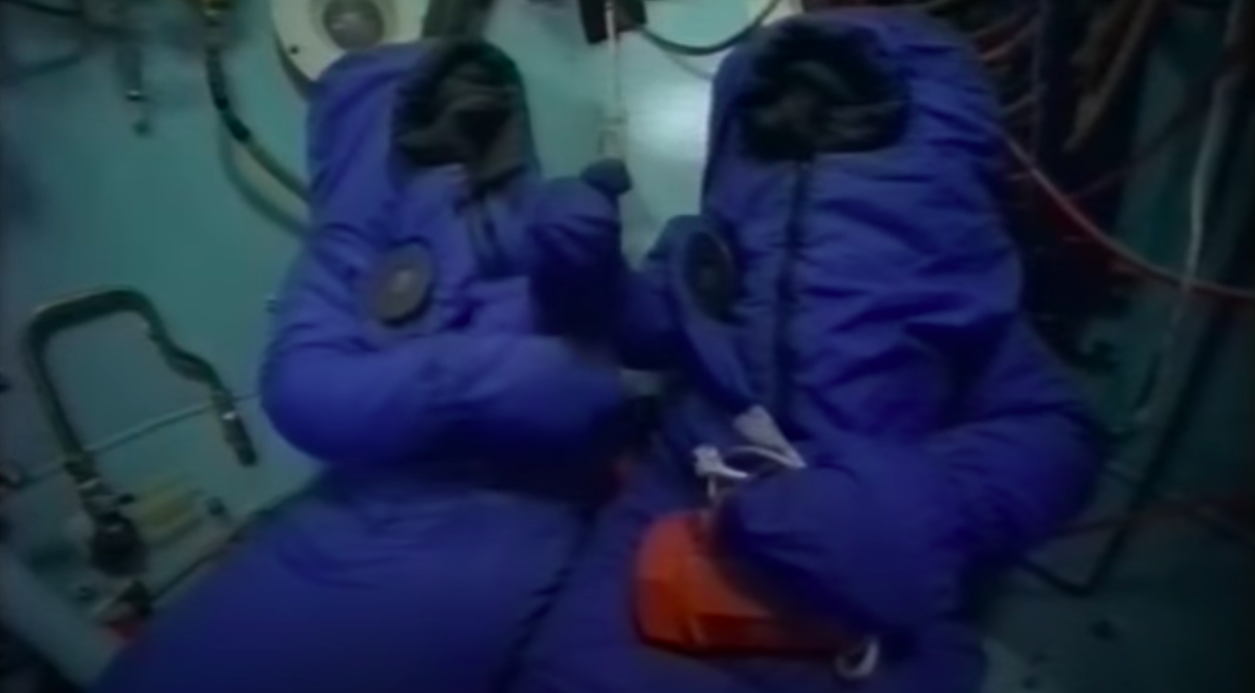
If the umbilical cord breaks, the diver has very little gas with him - for a maximum of 10-15 minutes. It is understood that during this time he must reach the bell; he has no other options at great depth.
In order to minimize emergency situations and make work safer (as far as this word, in general, is appropriate to use in relation to such work), support vessels are equipped with special dynamic positioning systems.
Below is a diagram of the location of the movers.
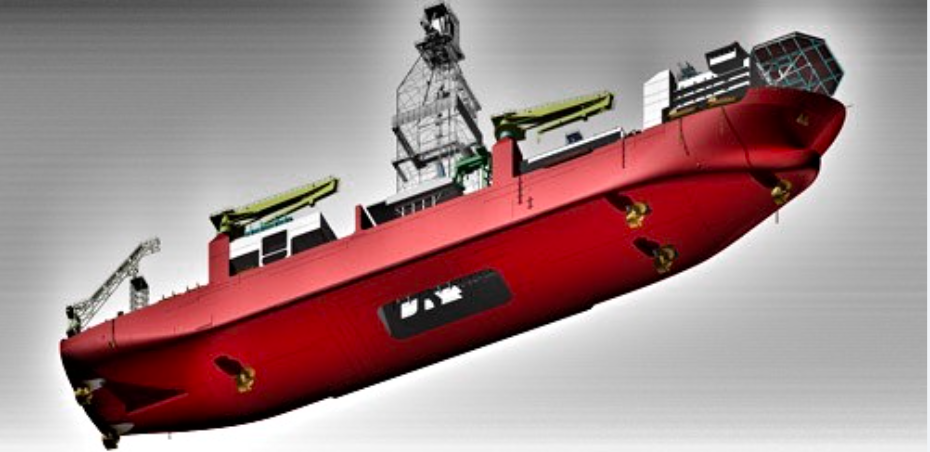
On such ships, not classic propellers or water cannons are often used, but Foid-Schneider movers or azipods.
The first option is the "wings" located vertically on a rotating platform. When changing the angles of rotation of the blades, the thrust vector also changes.
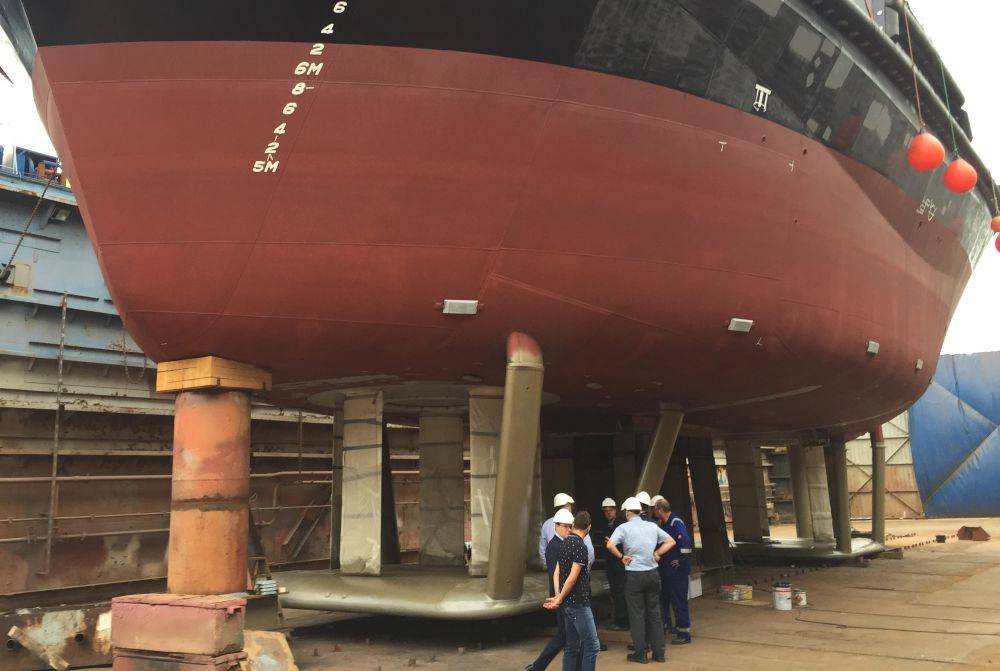
To some, such a mover may seem like something new and exotic, but this is far from the case.
Those interested can read about him in more detail in the issue of the magazine"Young modeller-constructor" No. 4 for 1963 year.
Second solution - azipod.
Electric motor located on a rotating console - the console rotates and changes the direction of the thrust vector.
Computer-controlled propellers, having data from a high-precision GPS system, make it possible to implement a mode in which the vessel "hovers" exactly over the diving site and keeps its position and orientation unchanged, despite the waves, currents and wind. However, there is a limit to the conditions under which this system can ensure that the ship's position remains unchanged. And if the specified parameters are exceeded (sea waves, wind speed), all work must be urgently stopped.
Adaptation to working conditions and psychological compatibility
When a group of people is closed together for a long time, psychological aspects begin to play a special role. Not everything can be predicted in the early stages of learning through surveys and drawing up a psychological portrait of a person (although there is some benefit from such methods). There is always a risk of unaccounted for psychological factors.
Interesting experiments in this area have been and are being carried out by the USSR / USSR in the context of manned flights to other planets.
From November 1967 to November 1968 (exactly one year), an experiment was conducted at the Institute of Biomedical Problems (IBMP), in which three volunteers were locked in an enclosed space, simulating space flight.
During the experiment, a lot of information was obtained. And among others, conclusions were drawn about the importance of psychological compatibility of people for such conditions.
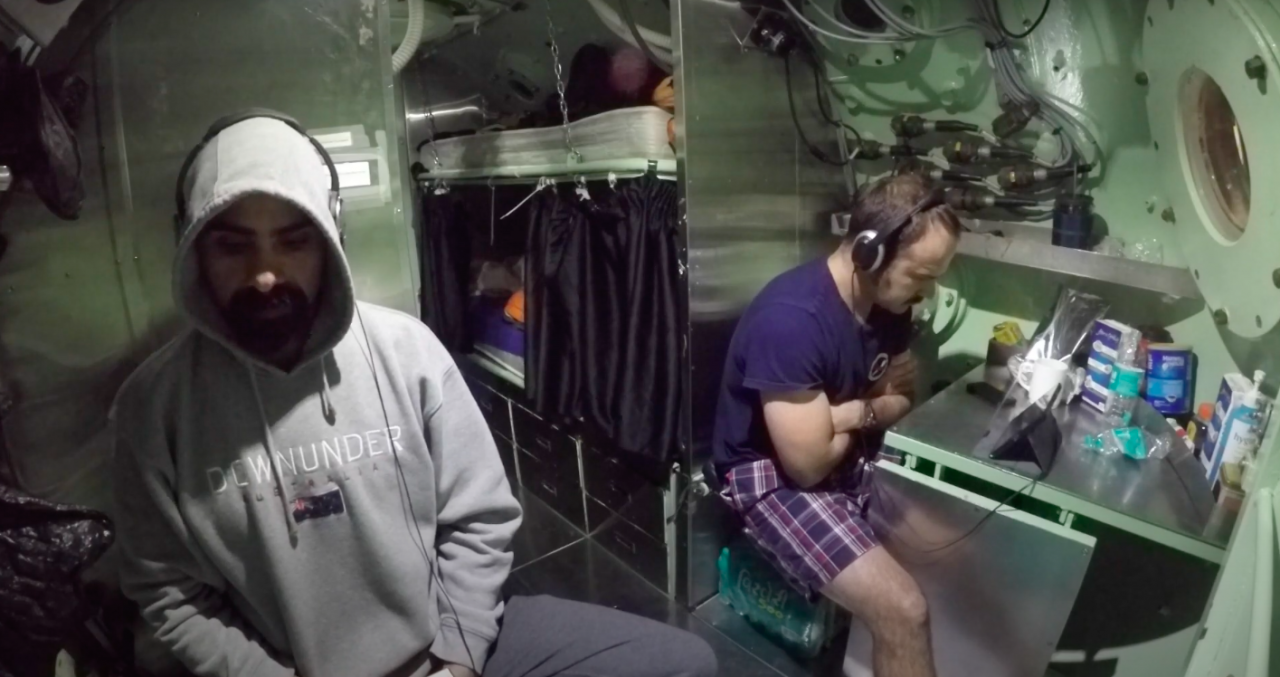
It is impossible to retire in such living conditions. Therefore, everyone tries to distract himself as best he can. Fortunately, modern technologies allow you to do this - headphones plus gadgets.
However, the older generation still prefers books ...
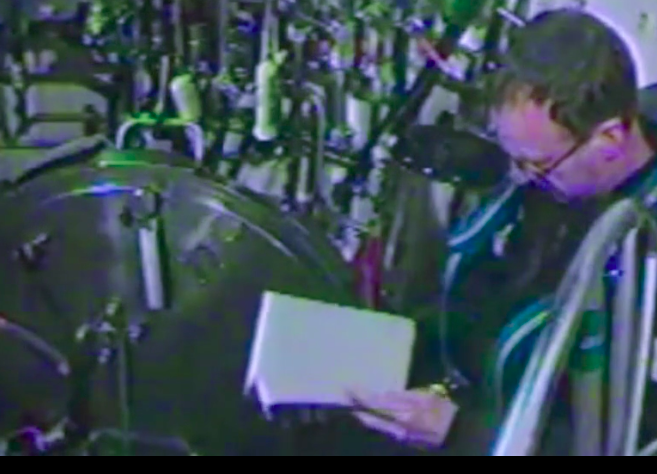
Diving film
Most often, 99% of films cannot be recommended for the purpose of acquainting with the real state of affairs, since much in them is distorted for the sake of entertainment, plot, etc.
However, there are exceptions.
One such good exception is the British-directed documentary Last Breath. About the development of an emergency situation with one of the deep-sea divers. Most of the storage space is the frames taken by the team directly at the moment the situation itself develops.
It is not possible to post the film itself here (without copyright infringement), but you can offer you to watch the trailer.
- Alexander Vorontsov
- http://oosif.ru/, https://novayagazeta.ru/, http://www.nyd.no, https://www.kirbymorgan.com/, ru.wikipedia.org
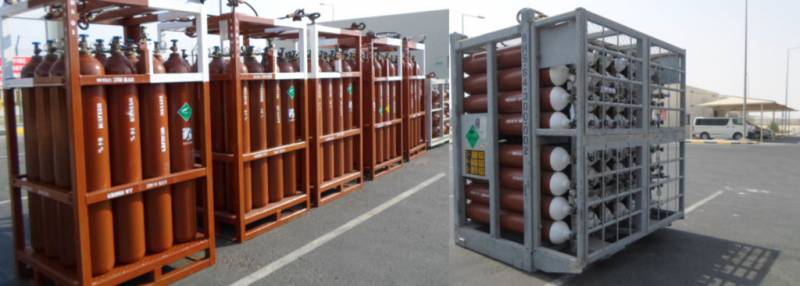
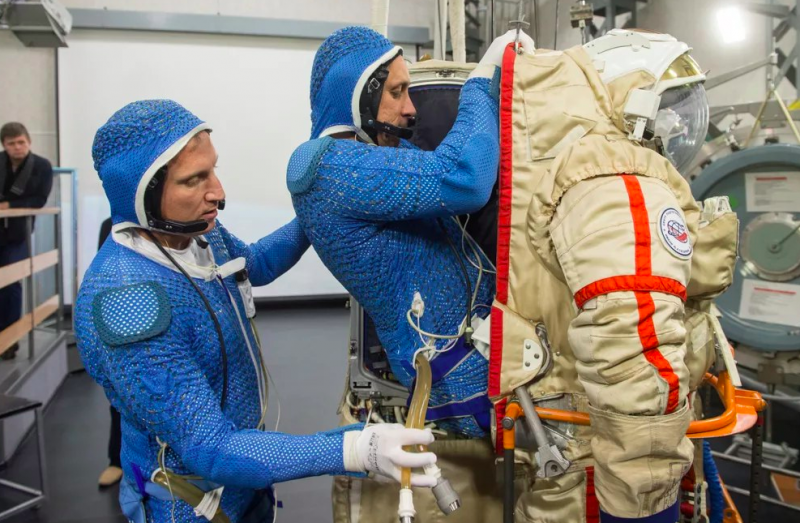
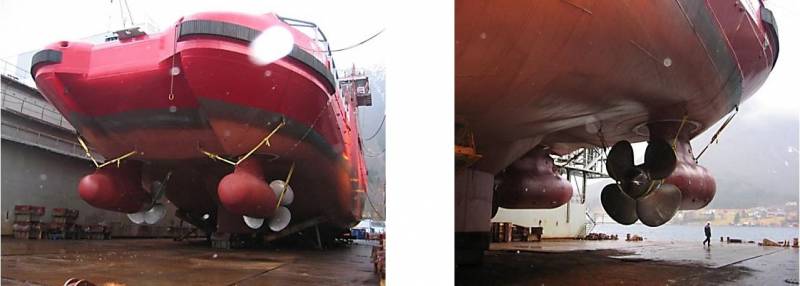
Information